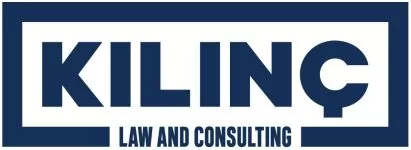- within Tax topic(s)
In today's world, there are many environmental derogations such as climate changes, water, air and environmental pollution, global warming, especially with fossil fuel consumption. Developed countries have also turned to sustainable energy sources in order to try to prevent environmental destruction. IMF, by issuing the call for "Green Recovery" during the Covid-19 pandemic; it pointed out that the countries of the world should gravitate towards green economy. Investors have started to finance environmentally friendly projects and technologies as the world economy turns to sustainable vehicles.
In this context, Capital Markets Board of Türkiye ("CMB"), with its decision dated 24/02/2022 and numbered 10/296, published Guidelines on Green Debt Instruments, Sustainable Debt Instruments, Green Lease Certificates and Sustainable Lease Certificates ("Guide")1 in order to encourage the financing of investments that will contribute to environmental sustainability. Guide has been prepared in accordance with the Green Bond Principles ("GBP") of the International Capital Markets Association ("ICMA"), which has become the global standard in the field of green bonds.2
II. DEFINITION OF GREEN DEBT INSTRUMENTS
In accordance with Green Bond Principles3 published by ICMA, green bonds are any type of bond instrument where the proceeds or an equivalent amount will be exclusively applied to finance or re-finance, in part or in full, new and/or existing eligible green projects and which are aligned with the four core components of the GBP.
In line with the above-mentioned definition, in scope of the Guide, green debt instruments refer to "any listed or non-listed debt instruments, framed by the four core components of the Guide, whose proceeds will be used exclusively for partial or total financing or refinancing of new and/or existing green projects in conformity with the eligible green project definition." The green project in this definition refers to the projects, as specified in the section of use of proceeds of the Guide, that contributes to environmental objectives such as mitigation of effects of climate change, adaptation to climate change, protection of natural resources, protection of biodiversity and control and prevention of pollution.
III. CORE COMPONENTS OF GREEN DEBT INSTRUMENTS
1. Use of Proceeds Obtained from the Issuance for Green Projects
In scope of Guide, funds obtained from the issuance of green debt instruments shall be used for green projects as defined above, as soon as possible, and the period predicted for use of said funds must be stated in the framework document. Pursuant to the Guide, a framework document is a document, an example of which is given in the annex of the Guide, prepared for the issuer's green debt instrument to be issued in compliance with the core components set out in the Guide and resolved by the board of directors. Eligible green project types are listed in the Guide as illustrative. These include renewable energy, energy efficiency, pollution prevention and control. All eligible green projects identified in the framework document, should be assessed by the issuer for environmental benefits and the environmental benefits should be presented in a measurable manner. Eligible green projects are exemplified, but not limited, in the Guide.
2. Project Evaluation Process
With this principle, Guide also regulate in detail which subjects the issuer of green debt instruments should disclose to investors through the framework document. Framework document must include;
- Relations of eligible green project types with such international covenants as Paris Climate Deal,
- Information on how the issuer has determined that exemplified eligible projects fall within the scope of the green project types,
- Explanation of the criteria used in the selection of green projects,
- Knowledge of the processes in place to identify and manage potential environmental and social risks associated with green project types.
3. Management and Follow-up of Funds Obtained from Issuance
In accordance with the Guide, as long as the green debt instrument is in force, the net fund balance should be managed by allocating it to eligible green projects during the relevant period. The issuer is obliged to include information in the framework document on how it plans to manage the unused portion of the fund until it is allocated to the relevant green projects.
The issuer is required to keep track of the uses of the funds obtained from the issuance of green debt instruments.
4. Reporting ve KAP Disclosure
Within the scope of the Guide, issuers are obliged to publicly disclose current information on fund allocation and significant developments, if any, within the scope of the fund allocation report once a year from the date of issuance and in any case after all of the funds obtained from the issuance have been utilized, in accordance with the CMB's Material Events Communiqué (II-15.1), on the Public Disclosure Platform ("KAP") if the issuer is a member of KAP and on the issuer's website.
Issuers disclose the estimated and/or actual environmental impacts to the public in the above-mentioned procedure within the scope of the impact report once a year from the date of issuance and after the entire fund obtained from the issuance has been used.
Fund allocation reporting and impact reporting should include the funds raised from the issuance of green debt instruments, a list of the projects to which these funds have been allocated, a brief description of the projects, the amount used for the projects, and the estimated impact of the projects. The fund utilization report to be prepared after all of the funds from the issuance have been utilized and the verification opinion on the internal monitoring method for the utilization of the funds should be disclosed to the public in KAP if the issuer is a member of KAP and on the issuer's website
In scope of the Guide, it is recommended that the issuer's impact report be reviewed and assessed by an external assessment organization.
IV. ISSUANCE PROCESS
Within the scope of the Guide, issuers are obliged to have their green debt instrument issuances certified that the debt instrument in question complies with the core components of the Guide, as a second party opinion by independent institutions listed in the list of internationally recognized organizations such as ICMA.
Issuers are obliged to submit the framework document and the second party opinion that the framework document is in compliance with the four core components of the Guide, together with other information and documents related to green debt instruments, to CMB during the application for approval of the issue document or prospectus regarding the issue ceiling.
The framework document and the second party opinion, together with the issuance document or prospectus regarding the issuance ceiling, should be disclosed to the public on KAP, if the issuer is a member of KAP, and on the issuer's website.
V. IN CONCLUSION
It should be noted that the principles regarding green debt instruments stipulated in the Guide published by the CMB in order to contribute to the development of green economy and green markets in Turkey, overlap with the principles of the GBP. In addition, we are of the opinion that the recognition and supervision of green debt instruments by a regulatory and supervisory body such as the CMB through this Guide will contribute to the development of these instruments and the growth of their markets, and thus will have an impact on the creation of green awareness in investment.
Footnotes
1 Guidelines on Green Debt Instruments, Sustainable Debt Instruments, Green Lease Certificates and Sustainable Lease Certificates, February 2022
2 Capital Markets Board, Announcement on Guidelines on Green Debt Instruments, Sustainable Debt Instruments, Green Lease Certificates and Sustainable Lease Certificates, Capital Markets Board of Türkiye (cmb.gov.tr)
(Access Date: 08.09.2022)
3 ICMA, Green Bond Principles, June 2021
The content of this article is intended to provide a general guide to the subject matter. Specialist advice should be sought about your specific circumstances.




